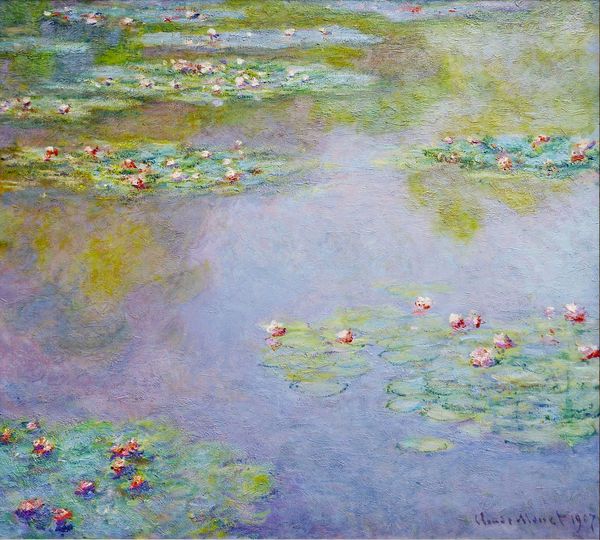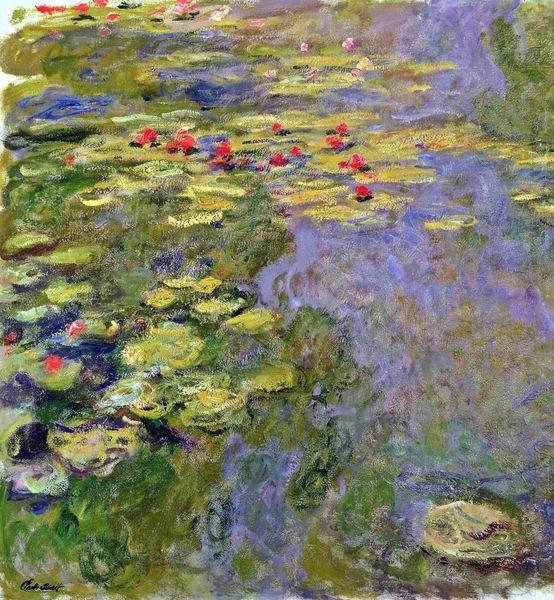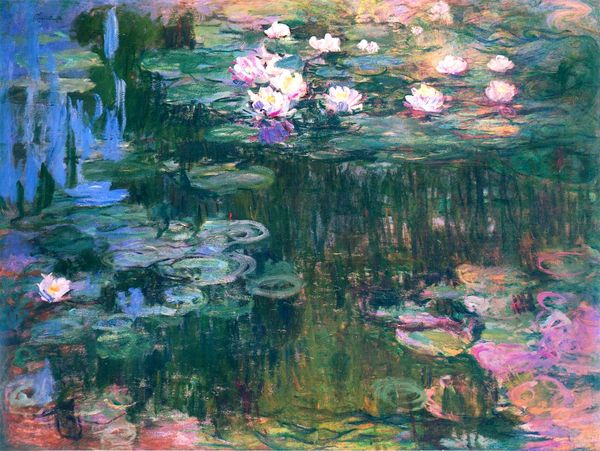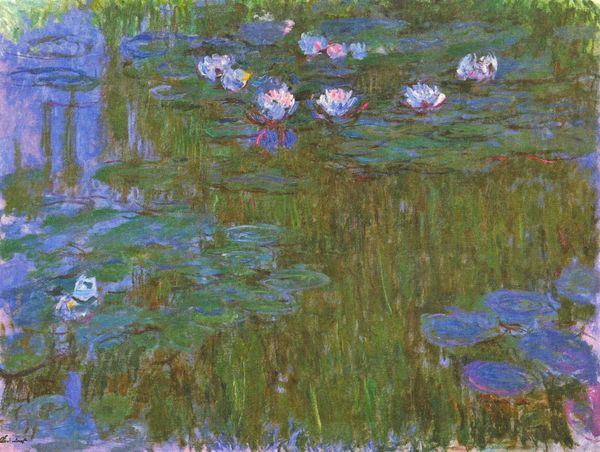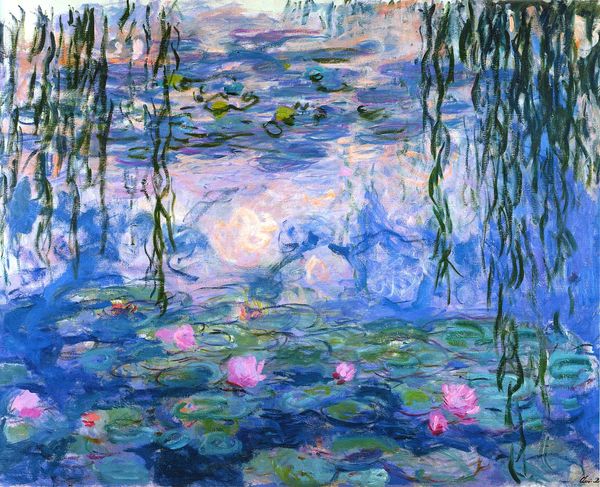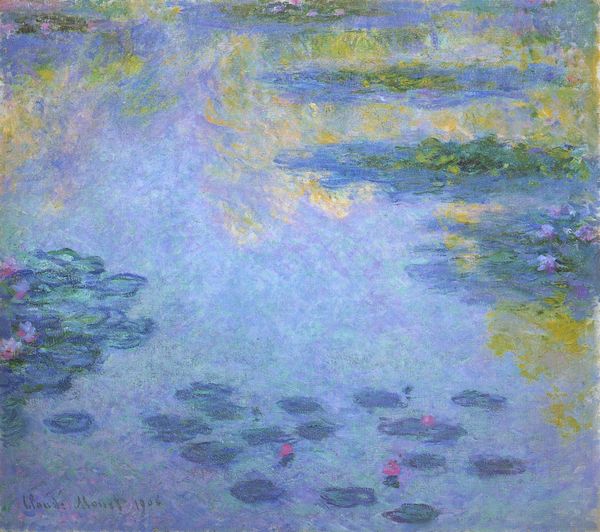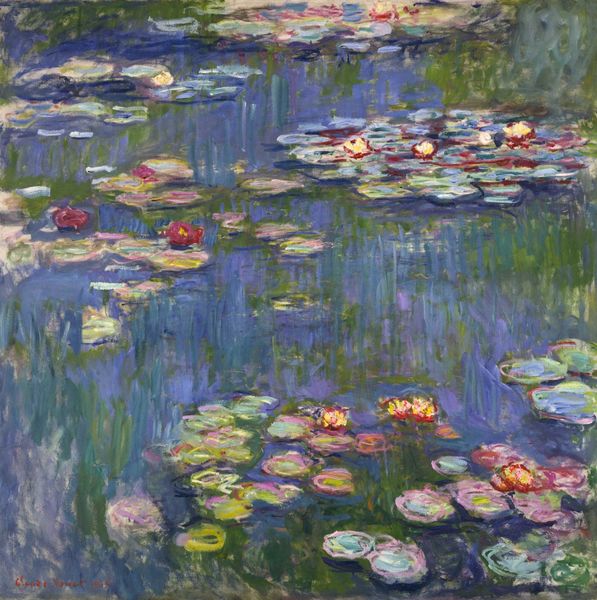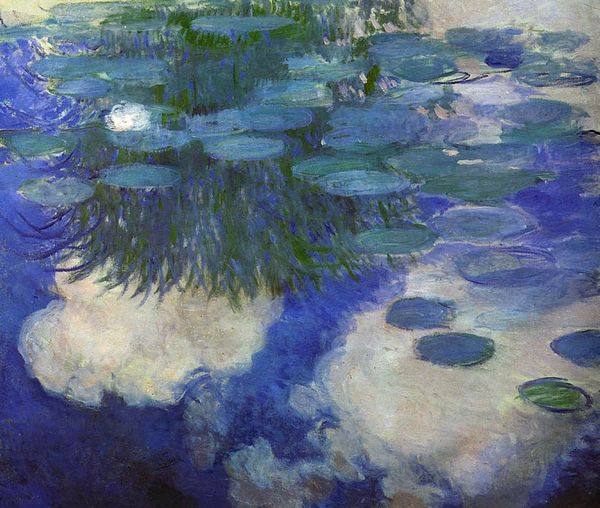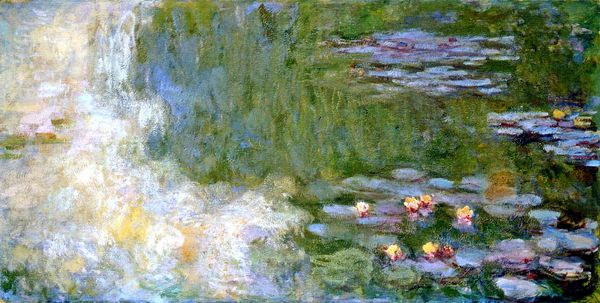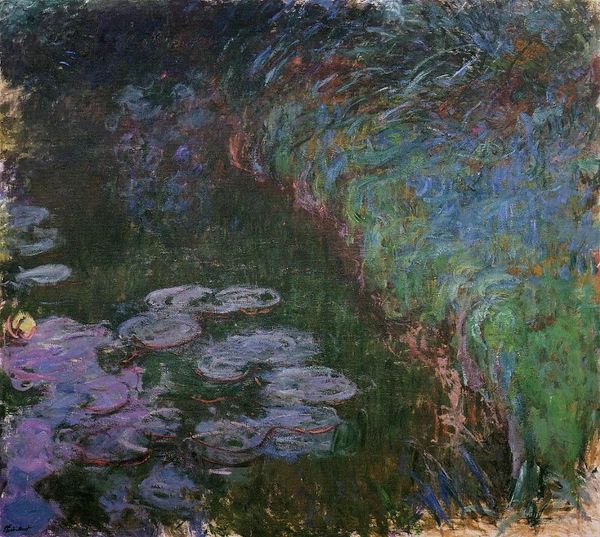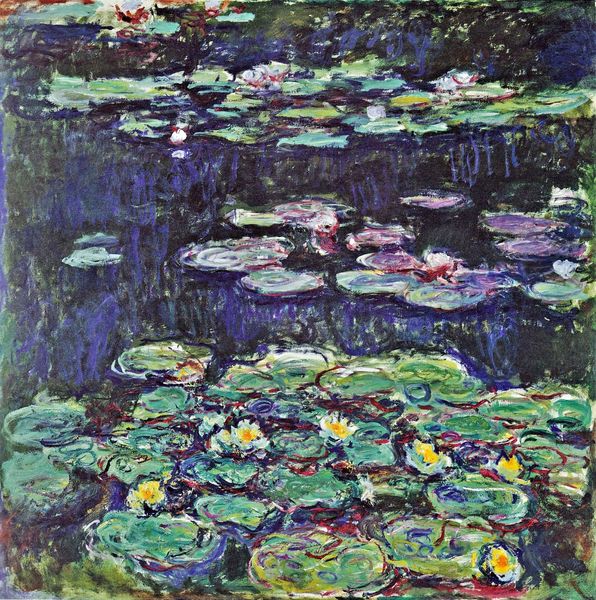
Copyright: Public domain
Editor: Here we have Monet’s "Water Lilies," painted in 1919 using oil on canvas. It's stunning, a dance of light and colour... a little overwhelming at first glance, perhaps even chaotic. What’s your interpretation? Curator: Chaotic, perhaps, but think of it more as a vibrant ecosystem teeming with life. Monet wasn't just painting water lilies; he was capturing the shimmering essence of light and reflection. He saw his garden at Giverny not as a subject, but a living canvas, a theatre of nature, if you will. Each brushstroke feels intuitive, a heartfelt response. Tell me, what feelings does the colour palette evoke? Editor: The blues and greens are calming, almost melancholic, but then those pops of red and orange from the lilies add a jolt of energy. Is that contrast deliberate, or am I reading too much into it? Curator: Oh, deliberately accidental, perhaps? Monet worked and reworked these canvases. There’s a meditative quality to his mark-making, achieved, I think, in part by returning to the same scene day after day, observing the shifting atmospheric conditions. Do you feel drawn in to the scene? Editor: Definitely. It's easy to get lost in the details, but when you step back, it all comes together… it breathes. Curator: Exactly! And in that breath, he captures something universal about nature, about beauty, about seeing. Monet lets us pause and consider what is really in front of us and what we create by observing the world and translating it in our mind’s eye. What will you take with you after experiencing this landscape? Editor: That sometimes what seems chaotic is really just a different kind of order, waiting to be understood, felt. And to truly *see* something takes time, patience, repeated engagement. Curator: Beautifully put. Monet’s gift, then, isn’t just showing us water lilies, but how to truly look, to feel the rhythm of the world.
Comments
No comments
Be the first to comment and join the conversation on the ultimate creative platform.
